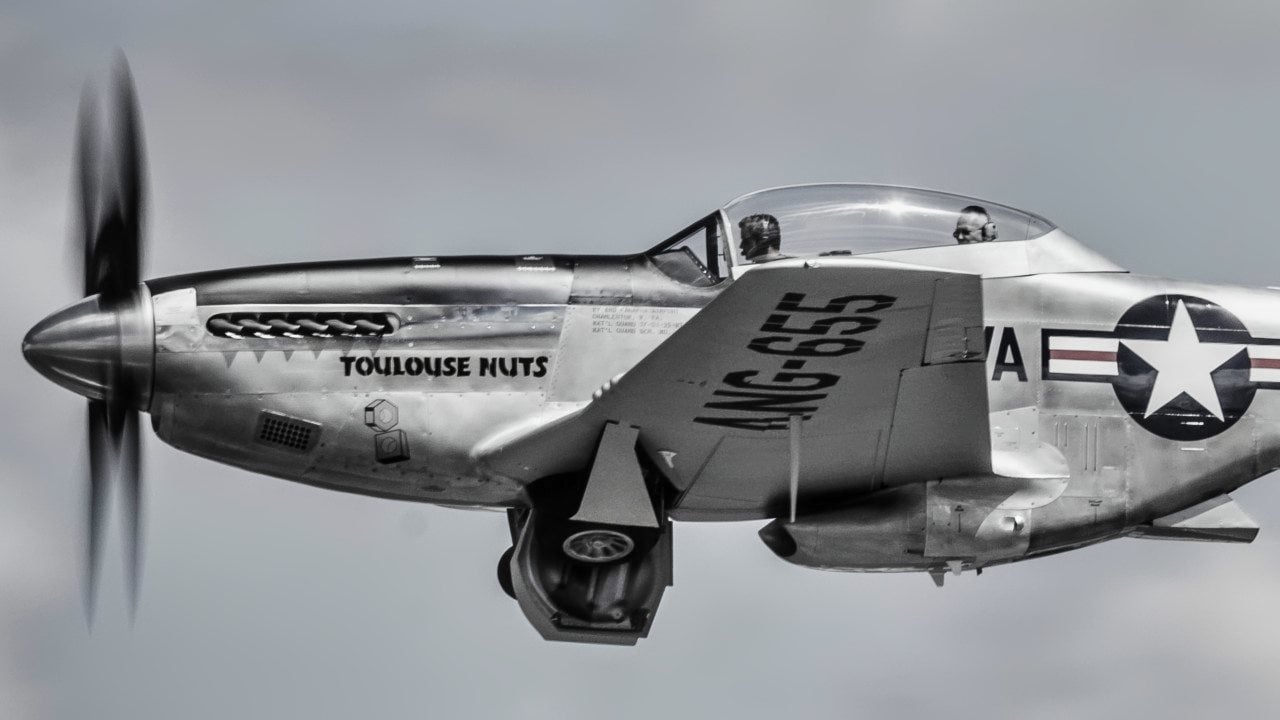Why the P-51 Mustang is Considered the Best WWII Fighter Plane
The North American P-51 Mustang, adopted by the U.S. Army Air Forces, went from design to prototype in just 102 days. Initially designed for the Royal Air Force, the Mustang became a pivotal aircraft in WWII after its Allison engines were replaced with Rolls-Royce Merlins, making it faster than the Spitfire.
Summary and Key Points: The North American P-51 Mustang, adopted by the U.S. Army Air Forces, went from design to prototype in just 102 days. Initially designed for the Royal Air Force, the Mustang became a pivotal aircraft in WWII after its Allison engines were replaced with Rolls-Royce Merlins, making it faster than the Spitfire.

-The P-51's durability and firepower, with six .50 caliber machine guns, made it a formidable opponent.
-Mustang pilots shot down nearly 5,000 enemy aircraft, with over 250 achieving ace status. Though production ceased in 1945, the Mustang remains an iconic aircraft, with fewer than 300 still in existence today.
P-51 Mustang: The Fighter That Outpaced the Spitfire
When the United States Army Air Forces adopted the North American P-51 Mustang, the cost per plane was a seemingly affordable $50,000 – about the cost today of a luxury SUV. However, adjusted for inflation, the P-51 would cost around $700,000 today, but it was still worth every penny. It was the last piston-engine fighter to see widespread service in the U.S. military and could easily go down as one of the best aerial attack weapons ever devised.
Today it may take years for an aircraft to be developed, but the P-51 went from a “clean-sheet” design to a flying prototype in just 102 days. The aircraft was actually designed and built to meet Royal Air Force (RAF) fighter command’s requirements. The RAF had first sought to acquire the P40 Warhawk, but North American Aviation instead built a wholly new fighter.
The RAF first used the Mustang in combat operations in October 1942. In addition to being used to escort RAF bombers and confront enemy bombers over the UK, the Mustang was also employed as a ground attack aircraft over the Dortmund-Ems canal. After the original Allison engines were replaced with the Rolls-Royce Merlin engine the Mustang became enchanted in its ability to serve as a multi-role combat fighter. It was so aerodynamic that it could outpace the RAF Supermarine Spitfire, which was equipped with the same engine.
P-51: Early Victories
When the RAF first adopted the P-51 Mustang as part of the lend-lease program something unexpected occurred – namely Luftwaffe bomber pilots didn’t immediately react. The reason was that the aircraft was quite different in appearance from the Hawker Hurricane or Supermarine Spitfire, but it actually resembled the German’s own Messerschmitt Bf 109, which caused some often fatal confusion.

While that gave the RAF pilots an advantage at attacking the bombers, some British ground crews mistook the P-51 for the Bf 109 as well. Fortunately, training caught up and such friendly-fire incidents ceased.
The P-51 was also one of the most durable aircraft employed by the Allies, and the American “bigger is better” mentality helped ensure that pilots could survive close calls with the enemy and even a crash. The only downside of this was that some of those that did crash was recovered and even repaired by the Germans. While none were ever likely used in combat, the Luftwaffe did rebuild a few for evaluation and testing.
P-51: Ace Fighter
During the Second World War, P-51 Mustang pilots shot down a total of 4,950 enemy aircraft while more than 250 pilots even achieved “ace” status – and had an average rate of 7.69 aircraft “kills.”
The aircraft was quite the deadly warbird thanks to its armament, which included three .50 caliber Browning AN/M2 machine guns in each weapon. Capable of firing 75 rounds per second, the aircraft carried enough ammunition for 32-seconds of sustained fire.
Over a five-year span (1940-45), 16,776 P-51s were produced – roughly 350 aircraft per month. Many of the aircraft were sold off after the Korean War, where they were used as personal racing planes and many are still in private collections. The last P-51 was retired from the U.S. Air Force in 1978, and the Dominican Republic Air Force retired its last P-51 Mustang only in 1984.

However, today there are fewer than 300 Mustangs still left in existence and just half of those are still airworthy. A few of those can still be seen in operation at the annual Reno Air Races.
About the Author: Peter Suciu
Peter Suciu is a Michigan-based writer who has contributed to more than four dozen magazines, newspapers and websites. He regularly writes about military small arms, and is the author of several books on military headgear including A Gallery of Military Headdress, which is available on Amazon.com.
All images are Creative Commons.


